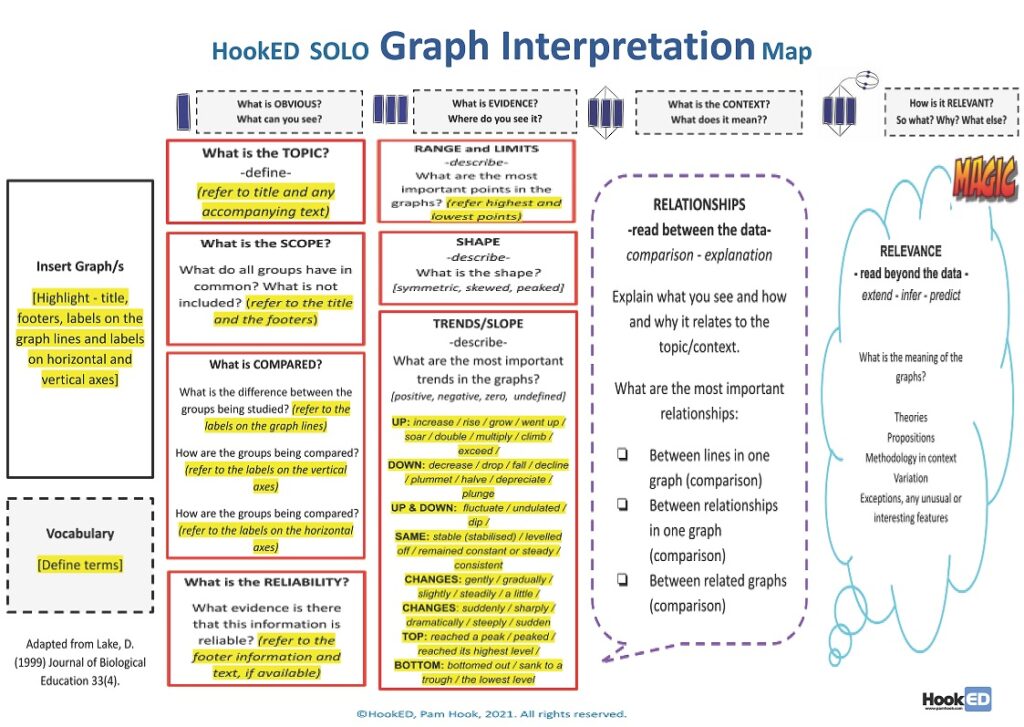“There is a magic in graphs. The profile of a curve reveals in a flash a whole situation — the life history of an epidemic, a panic, or an era of prosperity. The curve informs the mind, awakens the imagination, convinces.” – Henry D. Hubbard
Seeing the “magic” in a graph is like the, “THEN A MIRACLE OCCURS…” moment in the classic Sidney Harris cartoon.
The caption on the Sidney Harris cartoon suggests the miracle needs unpacking – it reads “I think you should be more explicit here in step two.”
Getting to the magic in graphs also requires us to be more explicit – to unpack the detail.
Any teacher will tell you getting to the point where the novice can see the magic in a graph involves careful teaching and learning – it is the result of carefully designed learning steps, steps of increasing cognitive complexity.
Making meaning from graphed data (statistical literacy) – requires both surface AND deep understanding of data – it requires definition, description, explanation, comparison, inference, prediction and transfer before a novice can experience the magic of seeing data in a new way.
We can support students with the cognitive demands of a graph interpretation task through SOLO Mapping the process and or with SOLO sentence frames and vocabulary lists for students learning how to find magic with graphed data.






{ 2 comments… read them below or add one }
Pam, this is yet another fabulous and useful HookED SOLO Map for us to add to the kete – this time supporting students (and teachers) through the complex process of the interpretation of statistical graphs in order to develop the critical sense to go beyond the data. Thank you.
Thanks Joy – I appreciate your expertise using SOLO Mapping and your feedback on this one. Looking forward to how you revise it in response to student feedback. Regards Pam